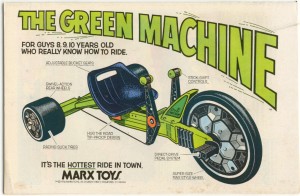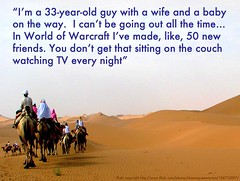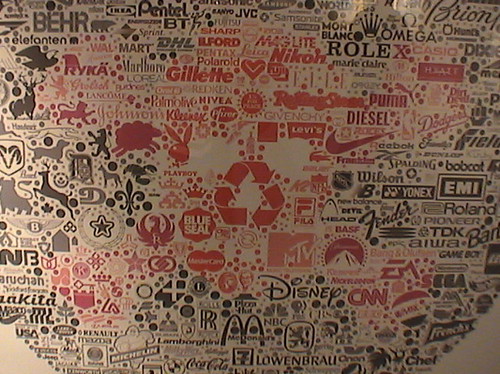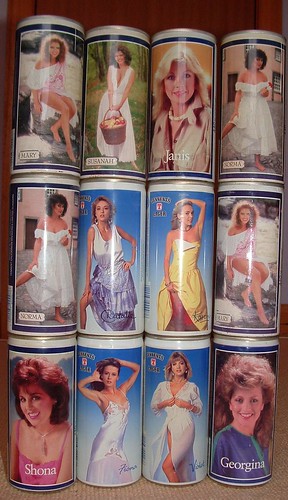 This article is part of the series — The Future of Your Brand Is ….
This article is part of the series — The Future of Your Brand Is ….
Working in kids marketing is an interesting challenge. Of course, there are ethical issues that you need to balance — the same can be said about any form of marketing — but there is something far more brutal in kids marketing than first meets the eye. It is the kids. They are a tough audience. There is no engagement, no discussion, no “pussy footing” around an issue. Either you are ON or your are out the door. There is no in-between.
One of the great things about this is that you know very quickly if your marketing is going to be successful. This is especially true online, where almost real time results can be seen flicking across your WebTrends or Google Analytics dashboards. But equally, this means that failure is also swift and judgment harsh. For those of us working with social media, we will be used to seeing the occasional unpleasant message in comments or on a forum some place. It comes as part of the landscape. But kids will be direct. Unwittingly cruel. And frighteningly honest. It is one thing to have “constructive criticism” on the campaign that you have taken months to craft, but quite another to be told “this sucks” by a 10 year old. It is even worse to have this echo across the web with alarming speed.
As a way of mitigating the risk of failure, one of the approaches I have used successfully is to align messaging, activation and engagement with the core developmental needs of kids at various ages. But to do this well you need to go deep. Really deep. And it needs to be personal. This is not just about the kids that you market to, but it is understanding on an emotional level, what worked and what did not FOR YOU. It means going back into your own imaginings and memories. It means searching honestly for the things that thrilled, frightened and fascinated you. It means being authentic.
The art of surprise
“I don’t know a lot about art, but I know what I like”
In Australia, this quote was famously dropped by Victorian Premier, Jeff Kennett, but anyone involved in the world of advertising or marketing would have heard it a thousand times. It is the defence of the unprepared client, the unready account director and the floundering creative director. It means that, in reality, the brief was ill prepared. It means that there was precious little by way of insight or analysis. It is the excuse that absolves one of responsibility — unless, of course, you are responsible for the creative.
And while I have heard this line a thousand times, there is some truth to the statement.
When I put together a brief I try not to be too prescriptive. After all, I want a creative response, not a yes/no answer to a series of problems. But there is a fine line between instructing and informing. And of course, I can also be obtuse, too far from the mark. Too open (but then, that’s what questions and phone calls are for). When I first receive a response to a brief, I am hoping to be amazed. I want to be surprised, astounded. I want the “Eureka” moment where an idea turns to gold and it gives me a moment to bask in the glory of true genius. This is the same expectation of the child. It is very much like I am a child opening a present. As children approach the world with a sense of awe and wonder, it is no surprise that the most mundane events elicit a powerful emotional response. However, as adults we guard ourselves with layers of cynicism and wrap ourselves in the safety of our own self knowledge. It is much harder for us to be swept up in an idea. We have EXPECTATIONS. And if someone says “gold”, then we want to see it.
 The brands that “get kids” understand the Eureka moment. They understand the art of surprise. They know what it takes to make a child respond with gleaming eyes and a rush of hastily thrown together syllables — “ffffwwoaaarhhh … eyeewahnthaaat!”. They are able to manufacture the excitement and stimulate the imagination. They are able to allow the kids to transform themselves from a spectator into a participant in the blink of an eye. These brands let the kids in, allow themselves to be taken over by a rampant imagination. In fact, they do this by design. Yes, design. But it also art.
The brands that “get kids” understand the Eureka moment. They understand the art of surprise. They know what it takes to make a child respond with gleaming eyes and a rush of hastily thrown together syllables — “ffffwwoaaarhhh … eyeewahnthaaat!”. They are able to manufacture the excitement and stimulate the imagination. They are able to allow the kids to transform themselves from a spectator into a participant in the blink of an eye. These brands let the kids in, allow themselves to be taken over by a rampant imagination. In fact, they do this by design. Yes, design. But it also art.
To understand how this works, to think through the power of surprise, its link with desire and how it can be created, I want to touch briefly on one of my childhood desires. (I told you this needs to work on a personal level.) But as I do this, I want you to think back to those cusp years, your “tween” years where you are not quite a child and not yet a teenager. These are pivotal years. Remember for a moment the toy that you loved but never owned. Or loved and loved till it fell apart. For me, my first unrequited love was the Green Machine. What was yours? Think about it now.
The Green Machine was a revelation. It was a colour that could not be mistaken. It was aggressively green when every other bike was red. It was low when everything else was high. It jutted out like an angry chin. And I can still see the camera angles used in the TVCs. The camera is slightly below the track of the footpath and a kid comes rocketing down the path leaning to his left, hands firmly on the twin controllers, banking the green beast around the edge of the garden. It is all over in a flash. It is all big wheels and green frame and kids with smiling teeth.
And while these images are a blur, what I remember to this day is the emotion and excitement about this toy (let’s face it, it was a toy). But what is weird (and probably slightly alarming) is that my memories of the ad actually feature me. When I replay them in my mind (what little I can remember), I see a blonde haired boy in a brown velour jumper and blue slacks (it is the 70s remember). It is me. But an idealised me. It is the invincible me … the one that can wear my “good” clothes while out riding with my friends.
You see, in this episode, in one single ad, there has been a complete transposition. It is me in control. I am in the driving seat — literally and figuratively. I am in the brand and surrounded by it. And I am giddy with the excitement and joy of the experience. Even now I am smiling.But being unrequited, my desire was disrupted. Perhaps this is why the Green Machine lived on for me. (It seems that it lived on for others too as it was reprised for a new generation some years ago.)
Why did the Green Machine work? Quite simply, because it tapped into the way that kids PLAY:
P — for power
L — for learning and curiosity
A — for adventure
Y — the yelp of surprise and delight
Next I will go into detail around each of these items and show how and why they work for kids. Oh, and in case you have not started to see it yet … I will piece it together to show why, in all seriousness, the Future of Your Brand is Play (see Part 2 here).







